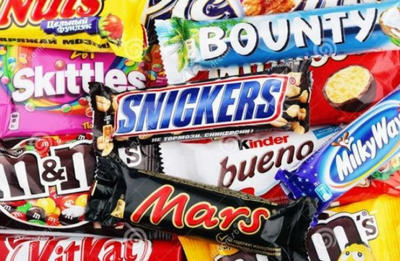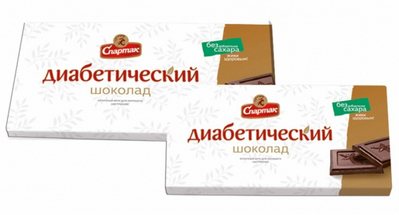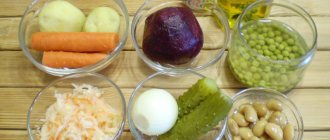Chocolate is one of the top five most popular desserts around the world.
It is not only consumed as an independent delicacy, but also used in cooking for making cakes, sauces, cocktails, and pastries. Chocolate toppings are often served with coffee, ice cream, pancakes and add taste and aesthetic completeness to dishes. In small quantities, chocolate is useful for diseases of the nervous system, as it has a positive effect on the synthesis of endorphins - polypeptide hormones responsible for a good mood (“joy hormones”).
Despite this, for some diseases, the consumption of chocolate bars and bars should be limited. Such pathologies include gastritis - inflammation of the gastric mucosa. Below we will discuss whether it is possible to eat chocolate if you have gastritis, what effect it has on the digestive processes, how you can replace chocolate products if you really want something sweet, and why you should not eat certain types of this product.
Composition and effect on the stomach
The main component of chocolate is cocoa butter, which is obtained from cocoa beans. Cocoa butter contains caffeine , a plant alkaloid that has a pronounced stimulating effect. Caffeine is white crystals with a bitter taste, so chocolate with the maximum amount of cocoa butter (more than 75%) has a tart, bitter aftertaste.
Almost all types of chocolate also contain theobromine , a purine alkaloid that in high concentrations can lead to serious poisoning. Theobromine is quickly metabolized in the human body and excreted as metabolites by the kidneys and liver, but if a person consumes chocolate products too often, an accumulation effect may occur, leading to intoxication of the body.

To understand whether patients with gastritis need to give up chocolate products, it is necessary to find out what they are made from and how the components used affect the functioning of the gastrointestinal tract.
Trans fats . Trans fats commonly used are hydrogenated coconut or palm oil. These additives are used in the production of cheap chocolate instead of natural cocoa butter.
Trans fats contain dense fat mass and increase the likelihood of constipation and the accumulation of toxic products in the stomach and intestines. Frequent consumption of such products increases the risk of liver dystrophy.
Sugar . In many types of chocolate, for example, milk or white, sugar is the main component that comes first in the composition. Sucrose negatively affects digestive processes, promotes fermentation and the accumulation of gas bubbles in the intestinal lumen, increasing the intensity of symptoms.
Cadmium . It is found in large quantities in dark varieties. Irritates the gastric mucosa, increases the likelihood of peptic ulcers.
Oxalates . Oxalates are the esters and salts of oxalic acid. They are difficult to digest and slow down the absorption of nutrients in the intestines. Frequent use increases the risk of stones and sand forming in the kidneys and ureters.
Note! Most chocolate bars and bars presented on store shelves contain a large number of chemical additives: flavors, preservatives, dyes. These substances negatively affect the condition of the epithelial lining of the stomach, irritate the mucous membranes of the digestive tract, and have a toxic effect.
Is it possible to have chocolate for gastritis: we eat sweets without harm to health – A WHIRLODS OF BENEFITS
People suffering from various gastrointestinal diseases often wonder if chocolate is ok for gastritis? Is dark chocolate harmful for pancreatitis? How will sweetness affect a weakened liver? Let's look at all the important nuances regarding these topics.
Is it possible to eat chocolate if you have gastritis?
To answer the question, you first need to define what modern chocolate is. The basis of any bar is beans from the cocoa tree, which themselves are very bitter and have an unpleasant taste.
These beans are processed in a special way to produce cocoa butter, a substance with high fat content. In order to properly process such a product, the body and partly the gastrointestinal tract must be absolutely healthy.
In addition, when making chocolate, manufacturers often add various chemical or natural additives to the sweetness:
- Berries;
- Fruits;
- Nuts;
- Milk;
- Sugar;
- Raisin;
- Alcohol;
- Dyes;
- Stabilizers;
- Flavors;
- Thickeners;
- Etc.
In order for the sweetness to retain its properties for as long as possible, in addition to everything described above, it will necessarily contain preservatives.
If we study the properties of each of these substances in more detail, then the answer to the question “is it possible to eat chocolate with gastritis?” will definitely be negative. This is partly due to the presence of caffeine in the product, which is strictly prohibited for gastritis.
How does chocolate affect the stomach with gastritis?
As soon as chocolate enters the stomach, it begins to produce hydrochloric acid , which provokes pain and further development of pathology. And all because the sweet bar contains cocoa butter, which has a high fat content, and caffeine, which irritates the walls of the stomach.
But, different types of sweets can affect the stomach in different ways:
- Milk chocolate. It is based on dry milk residues, which means that the total fat content of the product increases significantly (don’t forget about caffeine);
- White. It does not contain caffeine, but instead, liqueur and cocoa powder are added to the product. These products themselves are sweet, but the stomach cannot properly process small amounts of vegetable fats;
- Bitter. It contains cocoa powder and butter, a minimal amount of sugar and other substances. That is, the stomach “will feel bad” due to the “impact dose” of caffeine and vegetable fats.
For a person suffering from gastritis, they have not yet come up with the “ideal chocolate” that can be consumed. Therefore, during the treatment process you need to completely abandon this sweet product.
Is it possible to eat chocolate if you have a stomach ulcer? Essentially, a stomach ulcer is untreated gastritis. Therefore, sweets are also prohibited from being consumed at any stage of the ulcer.
Is it okay to have chocolate if you have colitis? No, because with this disease, absolutely all sweet, fatty and water-soluble foods that can cause rotting are removed from the diet.
Liver and chocolate
A lot can be said about the effect of chocolate on the liver. Consider one interesting study in which 20 people suffering from liver diseases took part. All of them consumed liquid food, and their diet necessarily included dark and white chocolate.
Studies of their health were conducted before and after taking sweets. In their course, it was possible to establish how chocolate affects the liver:
- After eating sweets, blood pressure increases;
- If there is only a white product, then blood pressure becomes higher than after a bitter (dark) one;
- Bittersweetness reduced vascular damage in people suffering from alcoholic liver damage.
This is caused by flavinids, which are present in any chocolate. Moreover, consuming a dark product for any liver disease is much more beneficial.
Is it possible to have chocolate for pancreatitis of the pancreas?
Let's figure out whether it is possible to eat chocolate during pancreatitis in its various forms, and how it affects the pancreas.
Acute phase
An inflamed pancreas reacts very quickly to various foods and especially sweets. Some types of chocolate are strictly prohibited in acute pancreatitis, because:
- They have a soda effect on the organ - oxalic acid and caffeine, which are found in certain types of sweets, provoke the secretion of pancreatic juice, which supports inflammation;
- Carbohydrates from chocolate are quickly broken down and enter the bloodstream, which provokes the release of insulin by the gland - this leads to improper carbohydrate metabolism, which also negatively affects the course of the disease;
- Various additives (raisins, dried apricots, nuts) with increased fat content provoke an even more rapid development of the disease.
- In addition, chocolate has a high sensitizing activity, which can cause various allergic reactions.
Remission phase
You can eat a piece of the treat after the illness has subsided. It is better to start with white chocolate, because it contains practically no theobromine and caffeine, and the percentage of cocoa powder is at a minimum level.
Of course, you can only eat pure, real, expensive chocolate without any additives. If, against the background of pancreatitis, a person develops diabetes mellitus, then you can only eat special varieties of chocolate created for people with this disease.
Such sweets have a beneficial effect on the body, exhausted after illness:
- Stimulates the functioning of the cardiovascular system;
- Improves mood;
- Improve brain function;
- Remove inflammation;
- Tone the body;
- Reduce the risk of developing diarrhea.
At the remission stage, you can eat no more than 50 grams of white product per day. In the acute phase of pancreatitis, sweets are strictly prohibited.
Can I have chocolate after gallbladder removal?
Unfortunately, after removal of the gall bladder, you cannot eat any types of chocolate , because the organ that is capable of processing fats no longer exists. Concentrated bile will no longer be produced by the body, and you will have to follow a strict diet until the end.
Is it possible to have chocolate if you have cancer?
A cure for cancer has not yet been invented. But scientists have found many different products that help cope with different types of tumors. A proper diet is the key to successful cancer therapy.
Chocolate contains substances that can disrupt the blood supply to the tumor. In the course of research, experts have proven the positive effect of this sweetness on the entire body that has any organ affected by cancer.
We figured out whether chocolate is good for gastritis and other gastrointestinal diseases. So, you can eat chocolate, but only under certain conditions. For example, if you have acute pancreatitis or colitis, it is better to avoid the product. But, sweetness will help you fight cancer faster and help with remission of pancreatitis.
Source: https://lukochko.ru/mozhno-li-shokolad-pri-gastrite-upotrebljaem-sladosti-bez-vreda-zdorovju/
Is it possible for inflammation?
Confectionery products that contain cocoa butter are classified as prohibited products for gastritis. This is due not only to the increased sugar content and the harmful effects of some components, but also to a large amount of fats (many of which are of low quality), which should be limited in case of gastritis.
The fat content in various types of chocolate is about 45% of the total mass. In expensive varieties (usually products made from dark and bitter chocolate), this figure can reach 55-70%. If a person with gastritis eats 2-3 cubes of chocolate, it will not cause him much harm , but with heavy consumption of this product, an exacerbation of the underlying disease and the development of complications are possible, for example:
- inflammation of the large or small intestine (colitis and enteritis);
- proctitis;
- ulceration of the mucous membrane of the gastrointestinal tract;
- fatty degeneration of the digestive tract and hepatobiliary system.

Fact! The only chocolate product considered safe for people with stomach inflammation is ruby chocolate. This is a rare variety that is made from cocoa beans grown in Brazil and Ecuador. It has a natural pink color and berry taste, and no chemical additives are used in its production. The consumption rate of such chocolate is no more than 4-5 cubes per day.
About the product
Candy is a molded confectionery product made from such products as:
- sugar;
- chocolate;
- caramel;
- iris;
- marzipan;
- marmalade;
- truffle;
- fondant;
- nougat;
- waffles;
- liquor;
- jelly;
- marshmallows;
- dried fruits;
- praline;
- grilled food;
- milk;
- fruits.
The product is available with or without glaze coating, as well as in the form of wafer products with a variety of fillings. The most famous and popular candies are chocolate bars, caramels and lollipops. However, today there is an extremely wide choice - there are different combinations of ingredients on the market, and there are even vegan options without animal ingredients.
Varieties and varieties: features of use
There is a common misconception that if you have gastritis, you can eat small amounts of bitter or dark chocolate, as they are considered the healthiest. This is wrong. It is expensive chocolate that contains a large number of natural highly toxic components, which in high concentrations can lead to intoxication and even poisoning.
People who cannot give up chocolate products are better off opting for milk chocolate. It is made from cocoa mass, cocoa butter and powdered sugar. Expensive varieties of milk chocolate contain milk powder and heavy cream, which reduce the load on the stomach and contribute to a faster breakdown of the components included in the composition.
Patients with gastritis and gastric ulcers should completely exclude the types of chocolate listed below from their diet.

- Chocolate bars . A product containing almost 70% sugar. In some bars, cocoa butter may be completely absent, due to which such products have a very low cost.
- Bars . A very high-calorie product containing a lot of fat and sugar, which irritate the gastric mucosa and disrupt the normal functioning of the intestines.
- Confectionery icing . The main component of the glaze for most products is cheap fat bases: coconut and palm oil.
- Chocolate cocktails (in industrial packaging). In most of these products, the chocolate taste is achieved by adding flavorings. There is usually no cocoa in them.
It is also better to exclude chocolates from the diet for gastritis, especially if they contain fatty (fondant) filling or alcohol.
Effect on acidity
Any products that contain cocoa butter are classified as products that increase the acidity of gastric juice. This is due to the fact that cocoa butter irritates histamine receptors and promotes the production of histamine, which regulates the activity of the parietal cells of the stomach. It is the parietal cells that are responsible for the synthesis of hydrochloric acid, so frequent consumption of chocolate in large quantities leads to increased acidity of gastric juice.
It has been proven that if a person eats a bar of chocolate at once, the concentration of hydrochloric acid in the stomach can increase 2-3 times and range from 1% to 1.5% (with a normal range of 0.4% to 0.6%).
If chocolate is present in the diet very often, complications may develop in the form of local erosive and ulcerative defects of the mucous membrane, so it is important to follow the recommendations of doctors and adhere to the established norm.
3. Exceeding the recommended amount of drink
Another common reason why abdominal pain occurs after coffee is non-compliance with recommendations regarding the amount of drink and its strength. In this matter, of course, everything is very individual and depends on the functioning of your stomach, but general advice should be taken into account.
So, you should not drink more than three servings a day. At the same time, in the mornings and evenings it is better to limit yourself to just one, and in the lunchtime and afternoon it is permissible to drink two.
Features of symptoms
The symptoms in this case will be similar to the previous ones: stomach pain that goes away on its own within half an hour. However, if the recommended dose is exceeded, other manifestations of the problem may appear : rapid heartbeat and breathing, sweating of the feet and palms, anxiety or agitation, rapid speech and “running” eyes. If the recommended dose is significantly exceeded, an obsessive state or panic attack may occur.
Treatment methods
If the recommended dose is slightly exceeded, you should wait out the condition - a hearty lunch and some time spent at rest will help relieve it. If the dose is significantly exceeded, it is recommended to rinse the stomach.
How much can you eat and what can you replace it with?
The relative norm for chocolate consumption for gastritis is 2-3 cubes (about 20 g). You can afford chocolate no more than 1-2 times a week. If you want sweets more often, it is recommended to replace chocolate products with products that do not affect the acidity of the gastrointestinal environment.

- Diabetic chocolate . This chocolate contains sweeteners (sorbitol, stevia) and does not cause fermentation and rotting processes in the intestines, so it can be consumed up to 3-4 times a week. The norm is 30-40 g.
- Vegan chocolate . It is made from rice, soy, and almond milk and does not contain cocoa butter or cocoa beans, therefore it does not affect the activity of histamine receptors and does not increase the acidity of gastric juice. The norm is up to 40 g per day.
- Sweets based on agar-agar . Agar-agar is a food supplement obtained from red and brown algae. It increases local immunity, promotes healing of the gastric mucosa, and envelops its walls. Agar-agar can be used in the production of marshmallows, marshmallows, and marmalade. You can consume products from this group up to 50 g per day.
Chocolate is a product of mass consumption, and if a person is used to eating chocolate products every day, he will not be able to immediately give up his habit. Even with gastritis, you can find compromise options, for example, replacing milk chocolate with a product for vegans or diabetics. Occasionally you can indulge in some chocolates, but you need to choose a quality product made from real cocoa butter.








